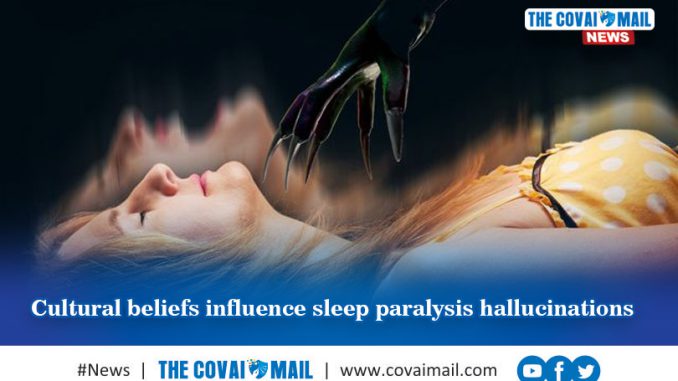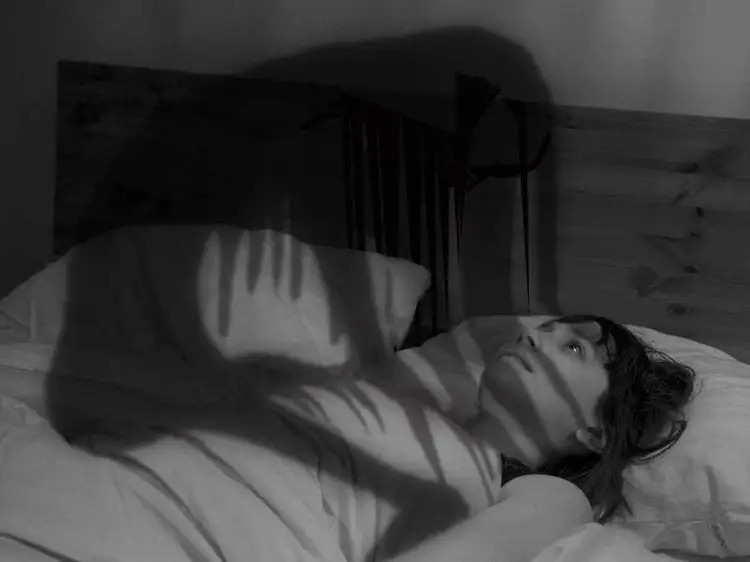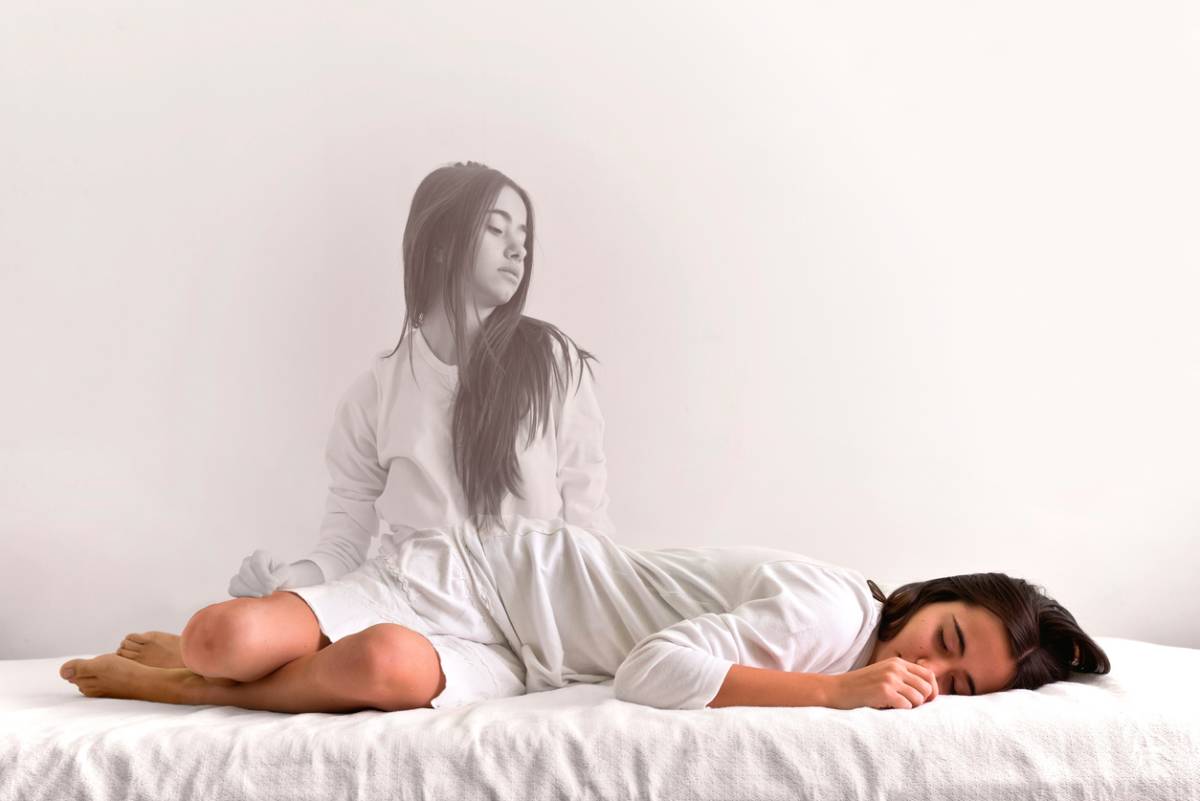
Imagine waking up in the middle of the night, your eyes wide open, yet your body refuses to move. You are completely aware of your surroundings, but an invisible force holds you captive. To make matters even stranger, you might encounter vivid and eerie hallucinations, or feel as if an otherworldly presence is lurking in your room. This perplexing and unsettling experience is none other than sleep paralysis.

Sleep paralysis is a sleep disorder that has fascinated and frightened people for centuries. In this article, we will dive deep into the world of sleep paralysis, debunk common myths, and reveal intriguing psychological facts about this mysterious phenomenon.

The appearance of demons or malevolent figures during sleep paralysis can be attributed to various factors, including the peculiar nature of the experience and how the human brain processes it. While these experiences can be intensely frightening, it’s important to emphasize that the entities perceived during sleep paralysis are not real. Here are some explanations for why people may encounter demons or menacing figures during sleep paralysis:
- Hallucinations: Sleep paralysis is often accompanied by vivid hallucinations. These hallucinations can involve all sensory modalities, including visual and auditory sensations. When someone experiences a hallucination during sleep paralysis, their brain may create vivid, sometimes terrifying, imagery.
- REM Sleep and Dreaming: Sleep paralysis episodes often occur during the rapid eye movement (REM) stage of sleep, where dreaming is most intense. During REM sleep, your brain is highly active, and vivid dreams are generated. Sleep paralysis can be considered a state where you are awake and aware while your body remains in a sleep-like state, making it more likely to experience these dream-like hallucinations.
- Fear and Stress: The feelings of fear and panic often accompany sleep paralysis episodes. When people wake up in a state of paralysis, unable to move or speak, their minds may naturally gravitate towards fear, anxiety, and a sense of vulnerability. This emotional state can influence the content of their hallucinations, making them perceive evil or menacing figures.
- Cultural and Personal Beliefs: People’s personal beliefs and cultural backgrounds can shape their experiences of sleep paralysis. If a person’s culture or personal beliefs include a strong notion of malevolent spirits, demons, or supernatural entities, it may influence the content of their sleep paralysis hallucinations.
- The Uncanny and Eerie: Sleep paralysis is inherently unsettling. The sensation of being unable to move, coupled with vivid hallucinations, can be inherently eerie and uncanny. Your mind may interpret these sensations as being under the influence of something malevolent, giving rise to the perception of demons or evil figures.
- Old Hag Syndrome: In some cases of sleep paralysis, individuals report a sensation of an “old hag” or witch-like figure sitting on their chest or attempting to suffocate them. This specific phenomenon has been documented in various cultures and might contribute to the association of sleep paralysis with malevolent forces.

Psychological Facts about Sleep Paralysis:
- Real and Documented Disorder: Sleep paralysis is not a figment of imagination. It’s a genuine and well-documented sleep disorder characterized by a temporary inability to move or speak while transitioning between sleep and wakefulness.
- Not a Mental Disorder: Contrary to popular belief, sleep paralysis is not a mental disorder. It’s a sleep-related issue and can affect individuals with various mental health conditions, but it’s not a mental illness itself.
- Sleep Deprivation Connection: Sleep deprivation and irregular sleep patterns can increase the likelihood of experiencing sleep paralysis. Quality sleep is essential for preventing it.
- Age and Prevalence: While sleep paralysis can happen to anyone, it tends to be more common in young adults, typically those in their late teens to early thirties. However, it is not limited to this age group.
- Linked to REM Sleep: Sleep paralysis episodes frequently occur during the rapid eye movement (REM) stage of sleep, the phase when our dreams are most vivid and intense.
- Genetic Predisposition: Studies have indicated that genetics may play a role in sleep paralysis, as it can run in families, suggesting a potential genetic predisposition.
- Stress and Anxiety Triggers: High levels of stress and anxiety can increase the likelihood of experiencing sleep paralysis. Managing stress is crucial for those prone to these episodes.
- Preventable and Manageable: Good sleep hygiene, stress reduction, and maintaining a consistent sleep schedule can help reduce the frequency of sleep paralysis, making it a manageable condition.
Debunking Sleep Paralysis Myths:
- Not a Paranormal Experience: Despite the eerie and surreal nature of sleep paralysis, it has a scientific explanation and is not related to paranormal or supernatural entities.
- No Physical Danger: While sleep paralysis can be terrifying, it does not pose a physical threat. It’s a temporary and harmless condition. You are not in physical danger.
- Not a Sign of a Serious Medical Condition: In most cases, sleep paralysis is not indicative of a severe medical issue. However, it can be a symptom of other sleep disorders like narcolepsy.
- Not Universal: Contrary to the belief that everyone experiences sleep paralysis, not everyone does. The frequency of sleep paralysis varies from person to person.
- Different from a Nightmare: Sleep paralysis is distinct from a nightmare. In sleep paralysis, you are awake but unable to move, often accompanied by hallucinations.
- Not Permanent: Sleep paralysis is typically temporary and can be managed and reduced with lifestyle changes and proper sleep hygiene.
Conclusion:
Sleep paralysis is a fascinating and often misunderstood phenomenon. It’s a real sleep disorder with a scientific basis, and it affects people of various ages and backgrounds. By dispelling myths and understanding the psychological facts about sleep paralysis, we can approach this experience with clarity and knowledge.
If you or someone you know experiences sleep paralysis frequently and it interferes with daily life, it’s advisable to consult a medical professional or a sleep specialist. Remember, while sleep paralysis may seem like a journey into the unknown, knowledge and support can help make it a less daunting experience.



